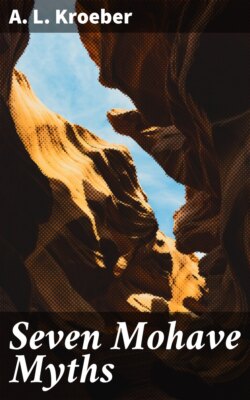Читать книгу Seven Mohave Myths - A. L. Kroeber - Страница 6
На сайте Литреса книга снята с продажи.
THE NARRATOR
ОглавлениеTable of Contents
The story of Cane, Ahta, more properly Ahta-'amalya'e, Long Cane, was told me on three days between April 24 and 27, 1904, with one day of intermission, by a middle-aged man named Tšiyêre-k-avasūk, or "Bluebird," who said he had dreamed the tale, beginning at Avikwame. I neglected to write down personal or biographical details about him, and dare not trust my memory at this interval.
This story has more plot interest than the majority of those which the Mohave profess to dream and sing to. It might be described as a tale of adventures on an almost epic scale, and it does not systematically account for the origin or institution of anything, although a bit of cosmogony drifts in toward the end.
The version recorded was told carefully and accurately. There are a number of internal discrepancies, especially as regards relationship of the characters and topography, which are considered in a section following the story itself; but the plot is well constructed and maintained.
The song scheme is also given after the tale. The songs are accompanied with a double beat of a stick struck against the bottom of a Chemehuevi bowl-shaped basket. Cane is not danced to.
The Cane type of plot recurs in another kind of Mohave singing called Satukhôta, of which only a brief outline was obtained. The singer of Satukhôta beats time by striking his palm against his chest.
